Much of London is invisible to its inhabitants. We are largely unaware, for example, of the 250 miles of railway track running underground and the hundreds of other lives being lived in the buildings that surround our own. Despite having lived on the same road in Kentish Town for 20 years, I have never seen the inside of a neighbour’s house.
I am continually reminded of those things I can’t see: a plaque round the corner tells me that the River Fleet flows beneath me, and there are always photographs tied to lamp posts telling me to look out for pets who have disappeared, as my cat did, into the maelstrom of back yards. People also disappear in London, which is one reason why they come here. I’m only aware of how much I want to vanish into the sea of faces when I leave the city and find myself uncomfortably visible again.
But the most strikingly invisible part of London is the air we breathe. Since the Clean Air Act 1956 we no longer have the peasoupers like the one described by Charles Dickens in Bleak House where there is fog everywhere, “making a soft black drizzle with flakes of soot as big as full-grown snowflakes”. But just because the air is now clear doesn’t mean it is clean.
London air is thick with bacteria, one strain of which – the tubercle bacillus – is a major cause of tuberculosis (TB). The development, in the 1940s and 50s, of the drugs streptomycin and isoniazid led many people – myself included – to assume that TB had been eradicated. But like so much else in London, it had simply gone underground. Of more than 5,000 TB patients diagnosed in England every year, nearly 40% are Londoners. London is the TB capital of Europe.
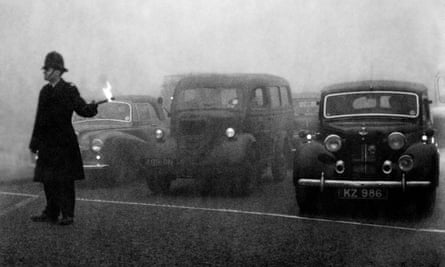
TB is invisible in two senses. First, its victims tend to be socially invisible: the bacterium ravages the lungs of the poor, the homeless, the malnourished; those whose immune systems have been weakened by overcrowding, exhaustion, drug use. It flourishes among migrant communities living in poverty, in prisons, and in hostels and halfway houses. Second, many of the destitute people we see every day have TB without knowing it: the symptoms of TB – cough, fever, night sweats and weight loss – hide behind the other effects of deprivation or addiction. So TB in London is like the titular object in Edgar Allan Poe’s The Purloined Letter, which avoided detection by hiding in plain sight.
As a writer I tend to see London as collection of stories, and TB has always been for me an evolving story that wasn’t always about invisibility. Two hundred years ago, TB was a tale of sensibility. Because I grew up inside books, I assumed that consumption, as it was once called, afflicted only those who lived more intensely than the rest of us: creative people who expired from the sheer nobility of being.

Marguerite Gautier, the consumptive courtesan in La Dame aux Camélias by Alexandre Dumas (fils), was the prototype: clutching her blood-spotted handkerchief, she burned beneath translucent skin. All my favourite writers, virtually without exception, died or were rumoured to have died from consumption: Keats, Kafka, Chekhov, Elizabeth Barrett Browning, Poe, and all three Bronte sisters, plus their brother, Branwell; DH Lawrence, Katherine Mansfield, Walter Scott, Dostoyevsky, Robert Louis Stevenson, George Orwell.
TB was the illness of storytellers, and so it was appropriate that, in order to learn the stories of TB on the streets of London, I was guided by a specialist at University College hospital called Al Story. It was also appropriate that Story took me first to Keats House in Hampstead, the pastoral spot where, in 1818, the 23-year-old poet first coughed up blood and proclaimed it his “death-warrant”. A Mediterranean-style villa in the rolling hills of Hampstead Heath seems an unlikely place to contract pulmonary TB: disease rates were then three times higher in the overcrowded parishes of Whitechapel and St Giles Cripplegate. But Keats House is, in many ways, where the story of consumption was born.
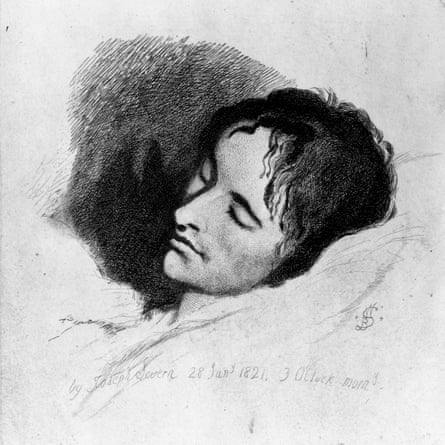
It was not where the disease itself was born of course – the bacterium is at least 17,000 years old – but where the romance began, because the myth of consumption as a flame that consumed the body from the inside was largely a product of Romanticism. It was John Keats, in Ode to a Nightingale – supposedly written in the house’s garden – who described the effects of consumption with the words “youth grows pale, and spectre-thin, and dies” then consolidated the idea of the consumptive as being “half in love with easeful Death”. The image was later fixed by Joseph Severn’s portrait of him on his deathbed in Rome, where he had gone for a change of air, preparing to “fade far away, dissolve, and quite forget”.
The romantic version of consumption itself expired when Robert Koch announced in March 1882 that he had discovered its cause, the tubercle bacillus. It was now proved to be an airborne infection rather than an inborn disposition, so a new TB story emerged in the 20th century: a tale of anger.
Around 100 years after Keats left Hampstead for Rome, Katherine Mansfield and DH Lawrence both moved to the heath. Both authors had TB, with Lawrence having possibly infected Mansfield, and both described themselves not as inwardly burning but as outwardly blazing: they raged against the dying of the light. “You revolt me stewing in your consumption,” Lawrence wrote once to Mansfield. It was an appalling thing to say, but the illness appalled people, especially those, like Lawrence, who spent their lives denying that they had it.
Lawrence, who probably contracted TB as a child in his Nottingham mining community, couldn’t enter a room without flinging open the window, regardless of the weather, and his wanderings through Italy and New Mexico took him to higher and higher spots. Even in Hampstead he lived at the top of the heath, in the aptly named Vale of Health: a sort of city sanatorium. Right until the end, when his lungs were shrivelled and he weighed seven stone, he described his condition as “bronchial”.
This is where the complexity of the TB story sets in: the glamour disguised a terrible shame, so much so that the illness couldn’t be named, even by doctors. As Kafka wrote to a friend from a sanatorium two months before his death: “Verbally I don’t learn anything definite, since in discussing tuberculosis ... everybody drops into a shy, evasive, glassy-eyed manner of speech.”
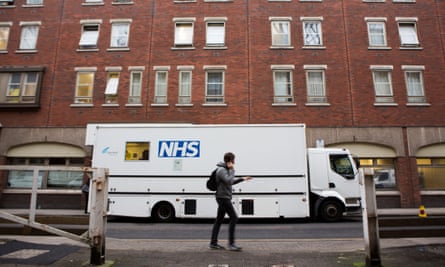
It is no longer possible to disguise TB behind a mask of sensibility, but the disease is still hiding in plain sight. Today in London, there is still so much shame about TB, Story told me, that he has known patients who would rather be diagnosed with Aids. To illustrate his point he took me to a location that, to protect the identity of the people we met there, will remain undisclosed. There stood a large white van emblazoned with the NHS logo: the pan-London Find & Treat mobile service, an x-ray unit that cruises the streets targeting those at risk of contracting the bacterium. Story is the founder of the mission.
I realised I must have passed the Find & Treat van on a dozen occasions over the years without having the faintest idea that it was a TB eradication machine. Stepping inside I found a small world of nurses, social workers, former TB sufferers, and people having their lungs screened by a radiologist called Jane Knight.
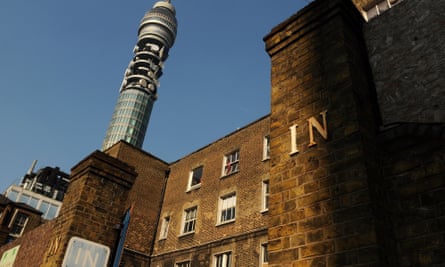
Showing me a pair of lungs on the screen, she described what she was looking for. As it happened, I had been thinking a good deal about lungs that week, not only in preparation for my exploration of TB in London with Story but because I had the day before, had my lungs x-rayed as part of a general health check attached to rheumatoid arthritis. And while I was in the Find & Treat van my consultant at University College hospital actually left a message on my mobile phone asking me to call her.
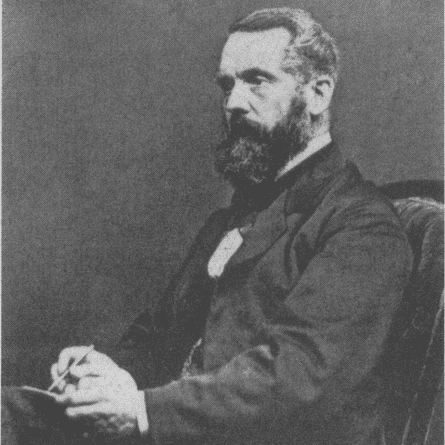
I didn’t get the message, and instead followed Story west to a narrow Georgian road in Fitzrovia that was once the site of the Cleveland Street workhouse. It is a place of multiple stories. Dickens lived nine doors down from it as a child, and the workhouse is believed to have been the inspiration for the one where the nine-year-old Oliver Twist, slowly starving, asks for a second bowl of gruel. I had expected a red-brick fortress behind high walls, but it was nothing of the sort. The former workhouse was hidden behind giant advertising hoardings informing us that it was being transformed into 52 luxury apartments selling for £2m each.
In the mid-19th century, the medical officer for the Cleveland Street workhouse was Joseph Rogers, one of the many invisible Londoners in the TB story. He was a tireless public health campaigner, one of whose achievements was the elimination, in 1851, of window tax. This was, notoriously, a tax on sunlight, fresh air and good health: bricking in windows prevented ventilation and spread disease. Every 18th- or early 19th-century street has at least one blocked-out window, and for every blocked-out window there was a greater risk of contagion, and death.
Rogers, who also helped to found the Association for the Improvement of Workhouse Infirmaries, belongs in a line of great London reformers, men like Henry Mayhew, author of London Labour and the London Poor, who interviewed market traders, prostitutes, sweatshop workers, and even the “mudlarks” who searched the banks of the Thames for wood, metal, rope and coal from passing ships.
Al Story similarly seems to know everyone. His city runs parallel to mine: I see health, he sees sickness; I see wealth, he sees poverty. He pointed out to me those people on the streets whose lungs are possibly infected by the tubercle bacillus. He surveys London with a new set of eyes: a blend of periscope and x-ray specs, rooting out the marginalised and dispossessed and putting them back on the radar, rather like George Orwell, who died of TB in 1950 at University College hospital on Gower Street, where Story stood and indicated the room to me. Where did Orwell contract the disease, I wonder: when he was down and out in Paris, or London?

When I came home that afternoon to think about how TB became the untold story of the city, something extraordinary happened, the coincidence of which I still haven’t quite absorbed. My consultant rang again and told me that, having looked at the x-rays of my lungs, it appeared I had two tumours. They might be malignant, they might be benign. I returned the next day to University College hospital for a CT scan of my chest, and thought, as I lay there, of the many thousands of lungs that Jane Knight and Al Story had examined over the years in their x-ray van.
When the results of my scan came back it transpired that the tumours were not cancerous, but the remnants of undiagnosed childhood TB. I had lived with tuberculosis for 40 years, as unaware of the infection as I was of the River Fleet flowing beneath my house. TB was my story too.
Contagious Cities is part of an international cultural project, developed by Wellcome. It will be broadcast on BBC Radio 3 every evening from 26-30 November, 10.45pm.
Follow Guardian Cities on Twitter, Facebook and Instagram to join the discussion, and explore our archive here

Comments (…)
Sign in or create your Guardian account to join the discussion